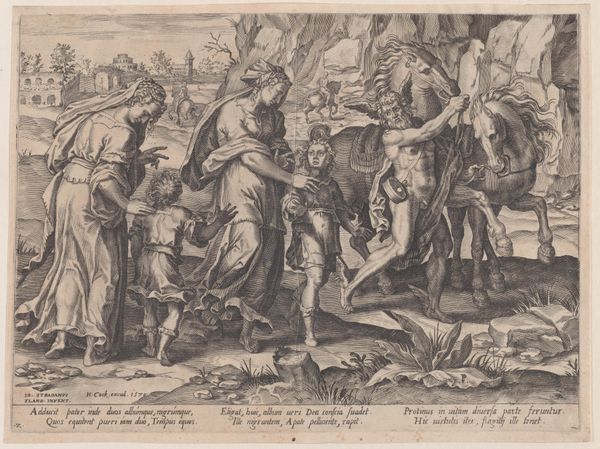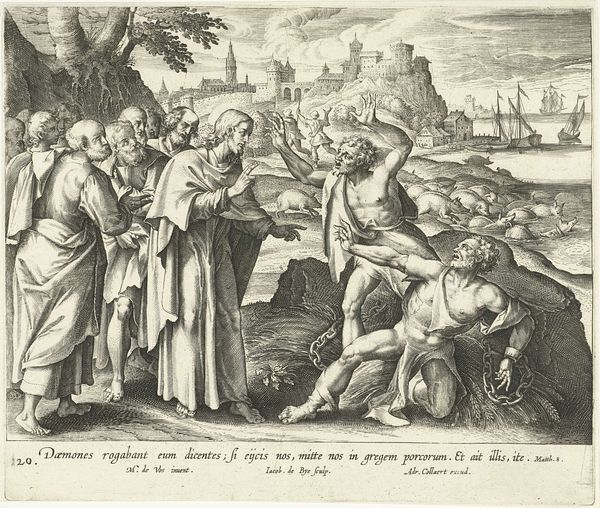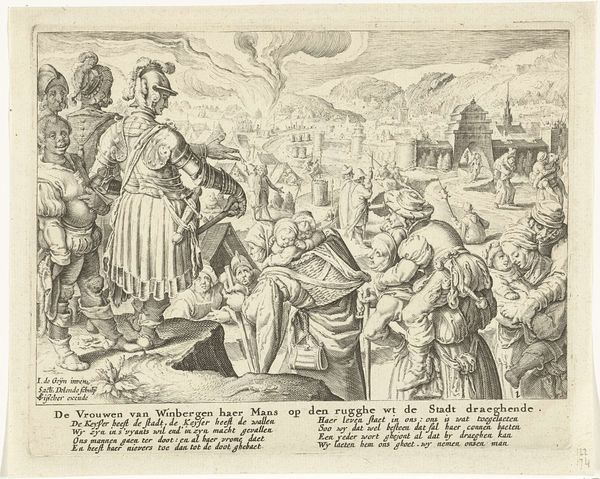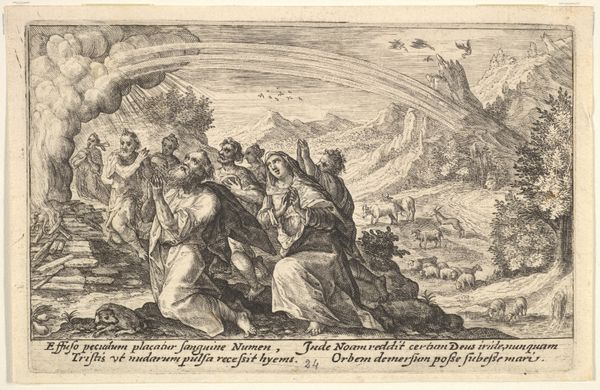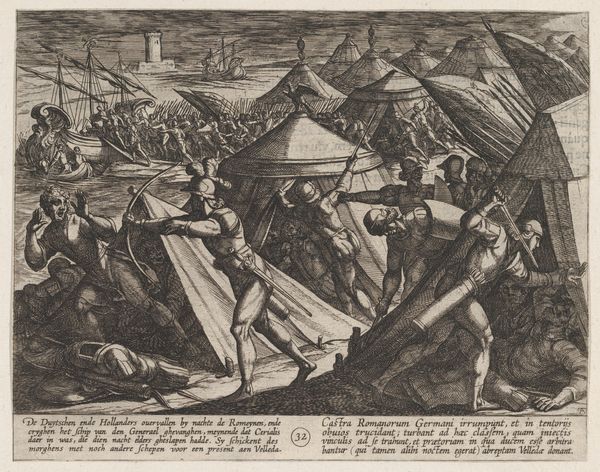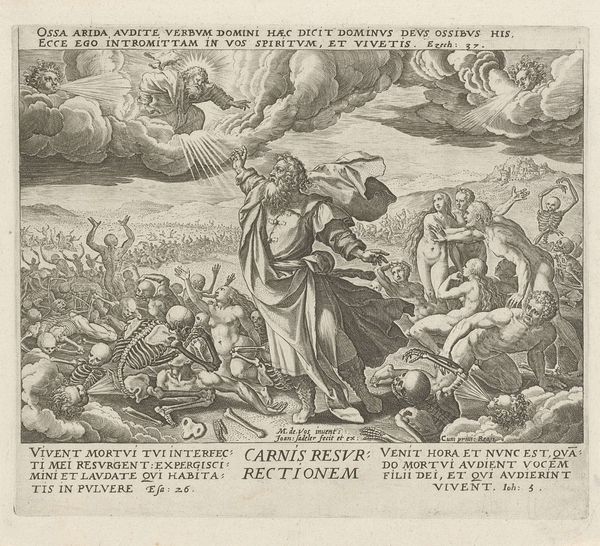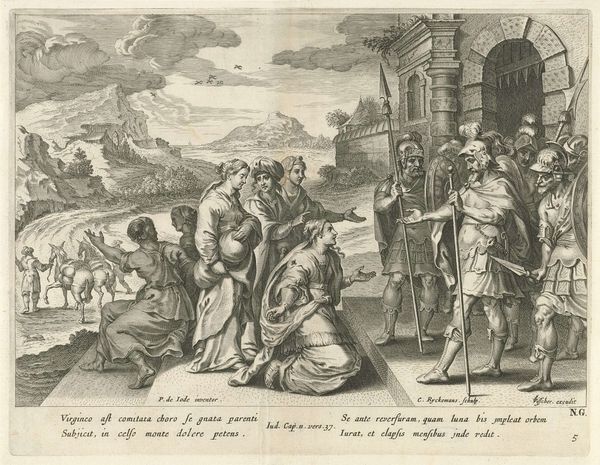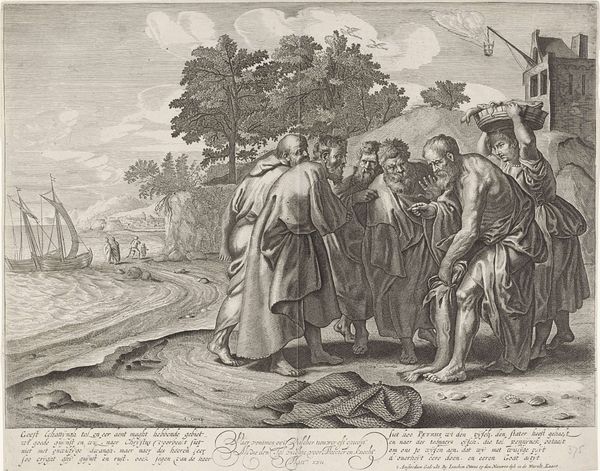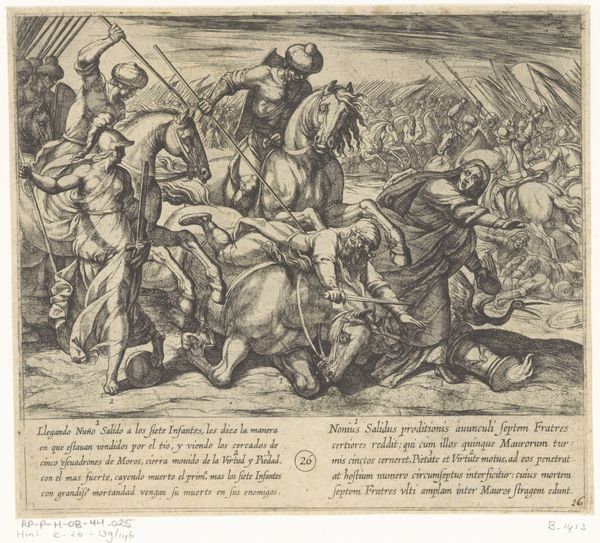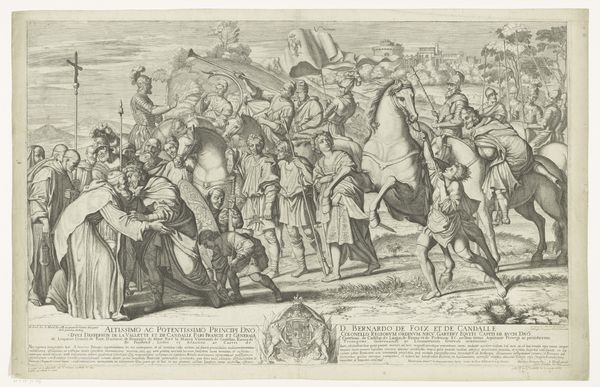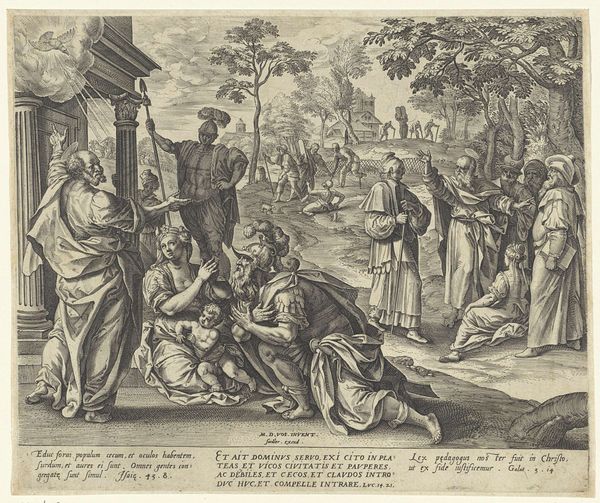
print, engraving
#
narrative-art
# print
#
landscape
#
figuration
#
history-painting
#
engraving
Dimensions: height 140 mm, width 177 mm
Copyright: Rijks Museum: Open Domain
Editor: Here we have "Begrafenis van de verdronken Hippo," or "Burial of the Drowned Hippo," an engraving made before 1652 by Zacharias Dolendo, currently housed in the Rijksmuseum. It depicts what looks like a solemn procession near a chaotic naval scene. The foreground is filled with mourning figures carrying a shrouded body, while in the background there’s a full-blown sea battle with ships ablaze. How do you interpret this work, particularly its juxtaposition of personal grief with grand-scale conflict? Curator: That’s a key observation. Considering Dolendo's historical context, we see this print participating in a broader culture of commemorating and disseminating news—often skewed—of events, particularly naval battles that were vital to Dutch national identity and economic power in the 17th century. What does it suggest about the politics of representing war at this time, especially regarding the human cost versus national triumph? Editor: So, it’s not necessarily a straightforward celebration of victory, but more of a commentary on the sacrifices inherent in these conflicts? Curator: Precisely. And consider the inscription below the image. It tells a story – presumably about Hippo – jumping from an enemy ship to save her honour. Dolendo isn’t just depicting a naval battle; he’s crafting a narrative around individual bravery and perhaps, questioning the glory often associated with military might. It makes one wonder who "Hippo" represents, whose story is he reflecting. Was she a known figure, perhaps a symbol? Editor: That’s fascinating. It makes me look at the background battle differently now. Curator: It asks us to consider what stories and whose losses were made visible—or invisible—within the larger theater of naval warfare and emerging national consciousness. Editor: I hadn’t thought about the role of prints in shaping public opinion and remembrance in that era. Thank you, that was enlightening!
Comments
No comments
Be the first to comment and join the conversation on the ultimate creative platform.
